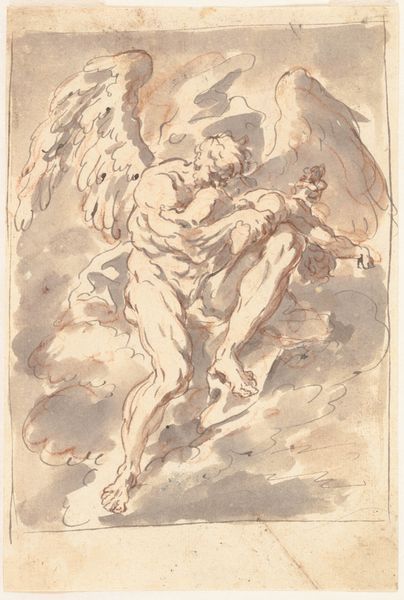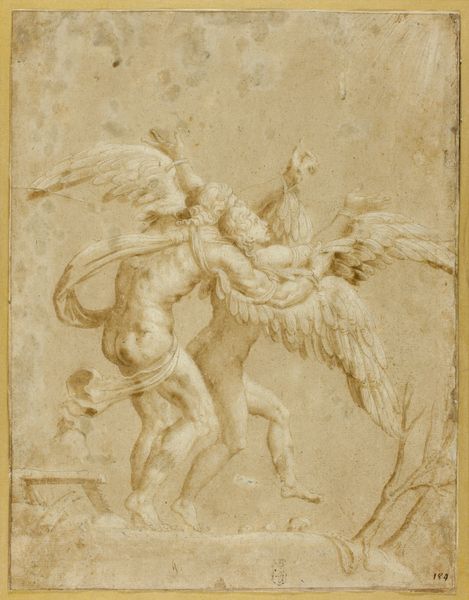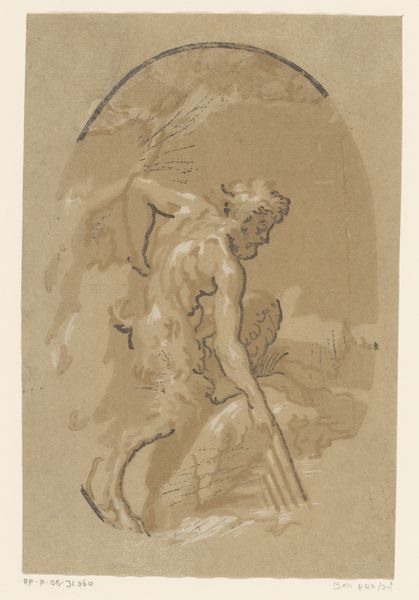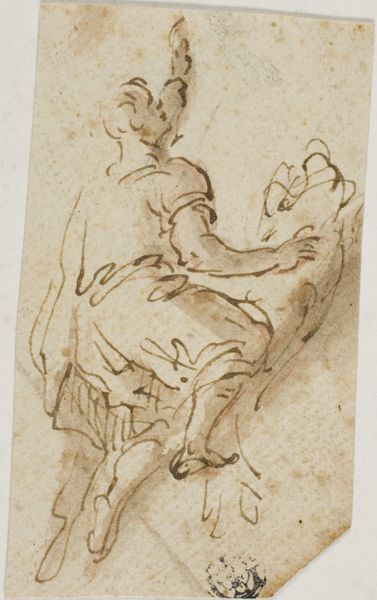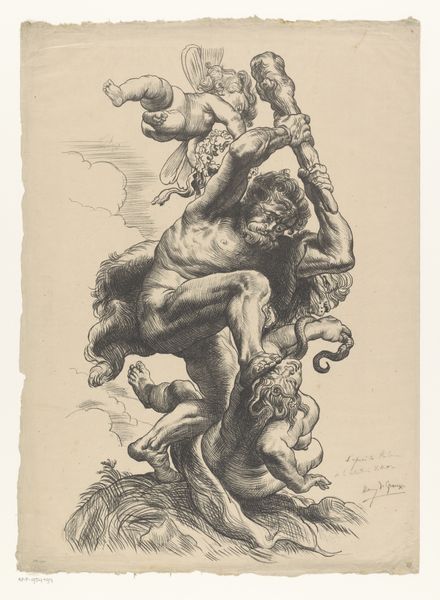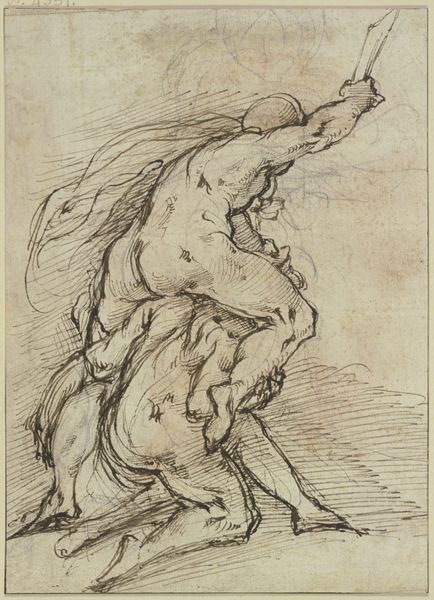
drawing, paper, ink
#
drawing
#
mannerism
#
figuration
#
paper
#
ink
#
ink drawing experimentation
#
history-painting
#
italian-renaissance
Dimensions: 381 × 281 mm
Copyright: Public Domain
Curator: Here we have Luca Cambiaso’s ink drawing, “Rape of Deianira,” created sometime after 1575. The piece, now residing at The Art Institute of Chicago, presents a dramatic scene rendered with striking dynamism. Editor: My goodness, what a flurry of motion! It almost leaps off the page. There’s something undeniably chaotic, even violent, about it at first glance. Like a tempest captured in brown ink. Curator: Indeed. The Mannerist style is quite evident in Cambiaso’s deliberate distortion of anatomical forms, seen in the figures’ elongated limbs and exaggerated musculature, intensifying the sense of drama and emotional distress central to this mythological scene. Editor: Distortion feels right—the centaur seems almost...fragmented. It's like Cambiaso is more interested in conveying the *idea* of motion, power, and perhaps a brutal narrative, rather than strict anatomical accuracy. Is it meant to be unsettling, this kind of beautiful violence? Curator: The beauty lies precisely in the tension it creates. Semiotically, the compressed composition reflects the turmoil of the abduction. Observe how Cambiaso employs strong, gestural lines to define form and movement, which amplify the underlying sense of instability and the disruption of social order inherent in such mythological scenes. Editor: I suppose. Though looking at it, I feel a pang for Deianira. This rendering strips away any romanticism, it's raw power on display, a story etched with ink—her story almost swallowed up by the frenetic lines. It makes me wonder about Cambiaso’s own emotional response while creating it. Was he simply illustrating a story, or grappling with the themes of force and vulnerability? Curator: A pertinent point. What this Mannerist interpretation provides isn't just a recounting of the myth, but a deep meditation on force, desire, and vulnerability in the face of conflict—the work serves to investigate the intrinsic violence embedded within our historical consciousness. Editor: Well, for me, I won't soon forget the emotional maelstrom bottled up in this frenzied sketch. It's more than a historical record—it is visceral storytelling. Curator: It is a work that continues to pose vital questions about representation and artistic agency, demonstrating why Cambiaso remains a seminal figure.
Comments
No comments
Be the first to comment and join the conversation on the ultimate creative platform.
